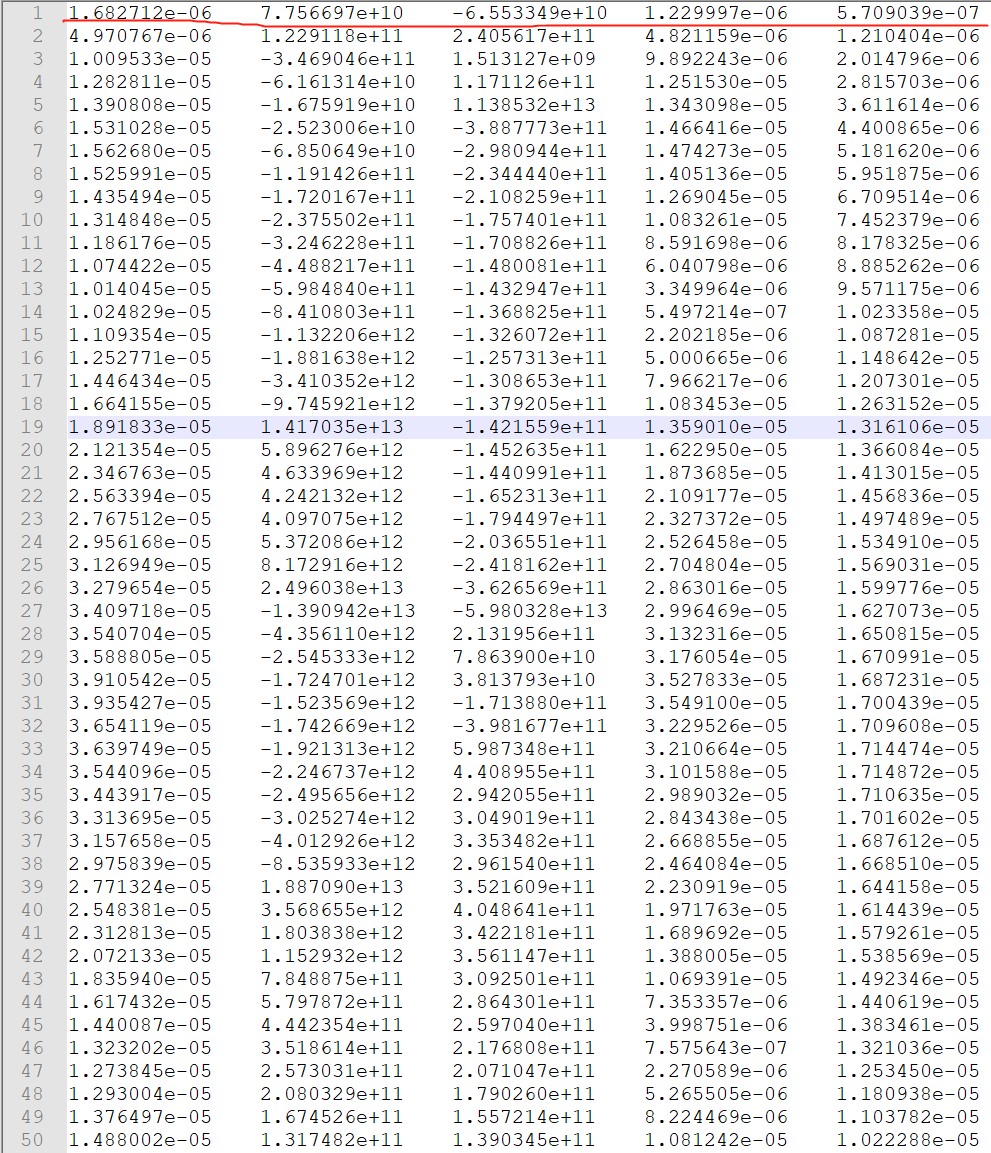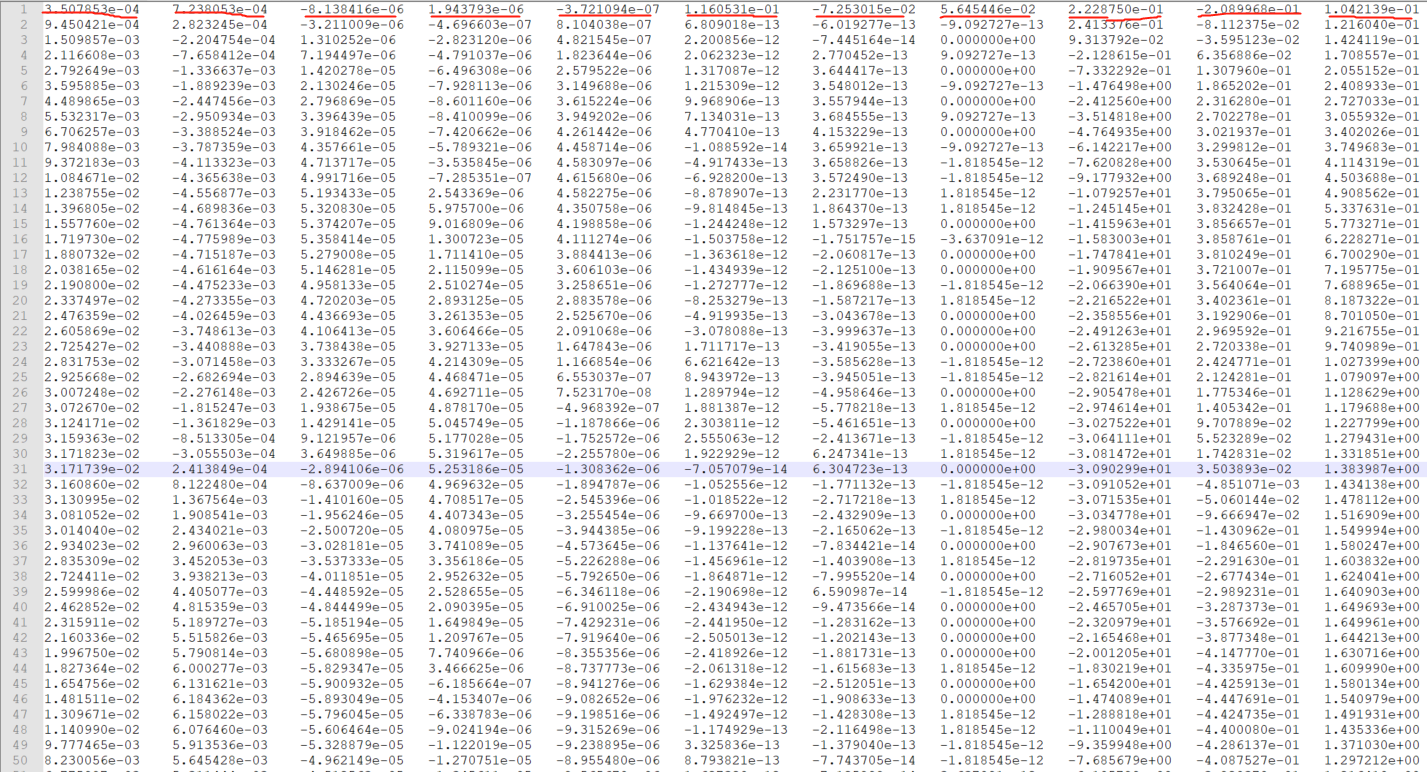1.利用神经网络去解决多维非线性回归问题遇到问题
2.代码如下
# --------------------------------------------------------------------------------------------------------------模块导入
import time
import matplotlib.pyplot as plt
import DNCR.two_dimension.v3_NN.get_data as get_data
import tensorflow as tf
import numpy as np
import DNCR.two_dimension.v3_NN.Normalize_data as Normalize
# ----------------------------------------------------------------------------------------------------------------------
# ----------------------------------------------------------------------------------------------------------获取开始时间
start = time.process_time()
# ----------------------------------------------------------------------------------------------------------------------
# --------------------------------------------------------------------------------------------------训练数据和待预测数据
# 获得归一化特征数据集
feature_train, feature_new = Normalize.normalize_feature(get_data.get_kn_feature(['Kn30-J-feature.dat',
'Kn30-J-feature.dat']), 1, 1)
# 获得归一化标记数据集及每个标记值的数值大小跨度
sign_train, max_min_len = Normalize.normalize_sign(get_data.get_delta_sign(['Kn30-J-sign.dat']))
sign_new = get_data.get_delta_sign(['Kn30-J-sign.dat'])
# ----------------------------------------------------------------------------------------------------------------------
# ----------------------------------------------------------------------------------------------------------------------
# 定义placeholder
x = tf.placeholder(tf.float32, [None, 5]) # 行不确定,有5列
y = tf.placeholder(tf.float32, [None, 1]) # 每个标记值训练一个神经网络
# ----------------------------------------------------------------------------------------------------------------------
# ----------------------------------------------------------------------------------------------------------神经网络函数
def neural_func():
Weights_L1 = tf.Variable(tf.random_normal([5, 40])) # 5行40列
biases_L1 = tf.Variable(tf.zeros([1, 40])) # biase永远为1行,列数和权重列数保持一致
Wx_plus_b_L1 = tf.matmul(x, Weights_L1) + biases_L1
L1 = tf.nn.sigmoid(Wx_plus_b_L1)
Weights_L2 = tf.Variable(tf.random_normal([40, 80]))
biases_L2 = tf.Variable(tf.zeros([1, 80]))
Wx_plus_b_L2 = tf.matmul(L1, Weights_L2) + biases_L2
L2 = tf.nn.sigmoid(Wx_plus_b_L2)
Weights_L3 = tf.Variable(tf.random_normal([80, 40]))
biases_L3 = tf.Variable(tf.zeros([1, 40]))
Wx_plus_b_L3 = tf.matmul(L2, Weights_L3) + biases_L3
L3 = tf.nn.sigmoid(Wx_plus_b_L3)
Weights_L4 = tf.Variable(tf.random_normal([40, 20]))
biases_L4 = tf.Variable(tf.zeros([1, 20]))
Wx_plus_b_L4 = tf.matmul(L3, Weights_L4) + biases_L4
L4 = tf.nn.sigmoid(Wx_plus_b_L4)
# Weights_L5 = tf.Variable(tf.random_normal([20, 100]))
# biases_L5 = tf.Variable(tf.zeros([1, 100]))
# Wx_plus_b_L5 = tf.matmul(L4, Weights_L5) + biases_L5
# L5 = tf.nn.tanh(Wx_plus_b_L5)
#
# Weights_L6 = tf.Variable(tf.random_normal([100, 100]))
# biases_L6 = tf.Variable(tf.zeros([1, 100]))
# Wx_plus_b_L6 = tf.matmul(L5, Weights_L6) + biases_L6
# L6 = tf.nn.tanh(Wx_plus_b_L6)
# ------------------------------------------------------------------------------------------------------------------
# ------------------------------------------------------------------------------------------------------------输出层
Weights_L7 = tf.Variable(tf.random_normal([20, 1]))
biases_L7 = tf.Variable(tf.zeros([1, 1]))
Wx_plus_b_L7 = tf.matmul(L4, Weights_L7) + biases_L7
prediction = tf.nn.tanh(Wx_plus_b_L7)
return prediction
# ----------------------------------------------------------------------------------------------------------------------
# ----------------------------------------------------------------------------------------------------------神经网络训练
prediction = neural_func()
loss = tf.reduce_mean(tf.square(y - prediction)) # 损失函数
train_step = tf.train.GradientDescentOptimizer(0.05).minimize(loss) # 使用梯度下降法训练
result = [] # 结果列表
with tf.Session() as sess:
for i in range(len(sign_train)):
sess.run(tf.global_variables_initializer()) # 变量初始化
for _ in range(10000):
sess.run(train_step, feed_dict={x: feature_train, y: np.transpose(sign_train[i])}) # 训练
print(sess.run(loss, feed_dict={x: feature_train, y: np.transpose(sign_train[i])})) # 输出每步损失值
prediction_value = sess.run(prediction, feed_dict={x: feature_new}) # 获得预测值
result.append(np.transpose(prediction_value*max_min_len[i]).tolist()[0])
# ----------------------------------------------------------------------------------------------------------------------
# ----------------------------------------------------------------------------------------------------------------可视化
title_list = ['Delta(hfx)', 'Delta(hfy)', 'Delta(tauxx)', 'Delta(tauxy)', 'Delta(tauyy)', 'Delta(RuRx)',
'Delta(RvRx)', 'Delta(RTRx)', 'Delta(RuRy)', 'Delta(RvRy)', 'Delta(RTRy)'] # 图标题列表
def Visual_func():
for i in range(len(result)):
title = title_list[i]
plt.title(title, fontsize='xx-large')
plt.plot(range(len(result[i])), sign_new[i], c='y', marker='o')
plt.plot(range(len(result[i])), result[i], c='b', marker='*')
# 设置刻度字体大小
plt.xticks(fontsize=20)
plt.yticks(fontsize=20)
plt.legend(['Train-I', 'Predict-I'], fontsize=20, loc='best')
plt.show()
Visual_func()
time_length = time.process_time() - start
print('运行结束!程序运行时间为:', time_length, 's')
输入与输出也进行了归一化,输出也进行了反归一化,效果一直不好。
如下图所示,第一张图片中每行代表一个样本,第二张图片中每行中的单个数据代表需要得到的非线性回归关系,总共11个关系。

如果有大佬能帮忙解决,感激不尽。
(导入的模块中有两个自编模块)以及数据还未上传,可以联系找我要。
